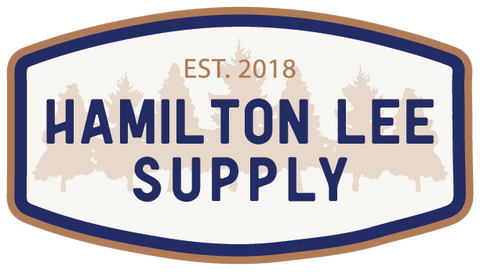LiveEdge Ancient Sinker Cypress 181 B.C.
Couldn't load pickup availability
Species: Sinker Cypress
SKU: BGRFSC000
Length: 100"
Width (Bottom): 54"
Width (Middle): 38"
Width (Top): 27"
Thickness: 2.75"
Weight Estimate: 200 Pounds
Origin: Battleground, Washington
Shipping Information:
-Slab Ships From: Battle Ground, Washington
-All slabs are subject to freighted shipping. Once purchased, we will contact you via email or phone to coordinate and secure the best negotiated shipping rate for your location. Shipping costs are based on your zip code, residential/commercial address classification, and whether a liftgate/forklift is required.
If you can't find a slab that perfectly fits your needs among our listed options, feel free to reach out to us directly. We can check our inventory for additional slabs that may suit your preferences.
Contact Information:
-Email: info@hamiltonleesupply.com
-Phone: 360.601.8388
Transform your vision into reality with our remarkable Live Edge slabs. Embrace the artistry of nature in your next woodworking project and create a unique masterpiece for your home.
Crafted with precision and attention to detail, this kiln-dried slab is project-ready, ensuring minimal wood movement and cracking. Our state-of-the-art iDry vacuum kiln removes moisture, guaranteeing its suitability for your project right away.
Please note that as each tree is unique, no two slabs are alike. This individuality guarantees that your furniture piece, whether it's a table, shelf, or any other creation, will be truly one-of-a-kind.
At Hamilton Lee Supply, we are committed to preserving and reusing stunning wood materials. Our focus on sustainability means that every slab tells a story and contributes to a greener future.
Common Names: Bald cypress, swamp cypress, sinker cypress, pecky cypress, tidewater red cypress
Scientific Name: Taxodium distichum
Distribution: Native to the southeastern United States
Tree Size: Grows to heights of 80120 feet (2437 meters) with trunk diameters of 35 feet (11.5 meters)
Average Dried Weight: Approximately 32.0 pounds per cubic foot (515 kilograms per cubic meter)
Specific Gravity (Basic, 12% MC): Ranges from 0.42 to 0.51
Janka Hardness: Measures around 510 pounds of force (2,270 Newtons)
Modulus of Rupture: About 10,600 pounds per square inch (73.1 MPa)
Elastic Modulus: Approximately 1,440,000 pounds per square inch (9.93 GPa)
Crushing Strength: About 6,360 pounds per square inch (43.9 MPa)
Shrinkage: Radial: 3.8%, Tangential: 6.2%, Volumetric: 10.5%, T/R Ratio: 1.6
Color/Appearance: Color varies from light yellowish brown with nearly white sapwood to slightly warmer, darker heartwood colors. Some pieces may have dark pockets and voids due to fungal attack, known as pecky cypress.
Grain/Texture: The wood typically has a straight grain and a medium to coarse texture. Unfinished surfaces have a greasy feel.
Rot Resistance: Oldgrowth bald cypress is very durable against decay, while wood from younger trees is moderately durable.
Workability: It's recommended to use sharp cutters and light passes to avoid tearout when working with bald cypress. It may have a moderate dulling effect on cutting edges. It glues, nails, finishes, and holds paint well.
Odor: Bald cypress has a distinct, somewhat sour odor when worked.
Allergies/Toxicity: Bald cypress has been reported as a sensitizer with occasional respiratory irritation as the most common reaction.
Pricing/Availability: Prices are typically in the midrange for domestic woods. Clear, knotfree boards for woodworking applications are more expensive than constructiongrade lumber. Specialty lumber such as reclaimed sinker cypress or pecky cypress is much more costly.
Sustainability: Not listed in the CITES Appendices, and reported as a species of least concern by the IUCN.
Common Uses: Bald cypress is used for exterior construction, exterior furniture, docks, boatbuilding, interior trim, and veneer.
Comments: Bald cypress is known for its unique aerial roots called knees, which protrude above the ground or water. These trees are deciduous and drop all their leaves each winter. The wood is popular in exterior construction due to its decay resistance. It's sometimes called simply "cypress" in North America.













